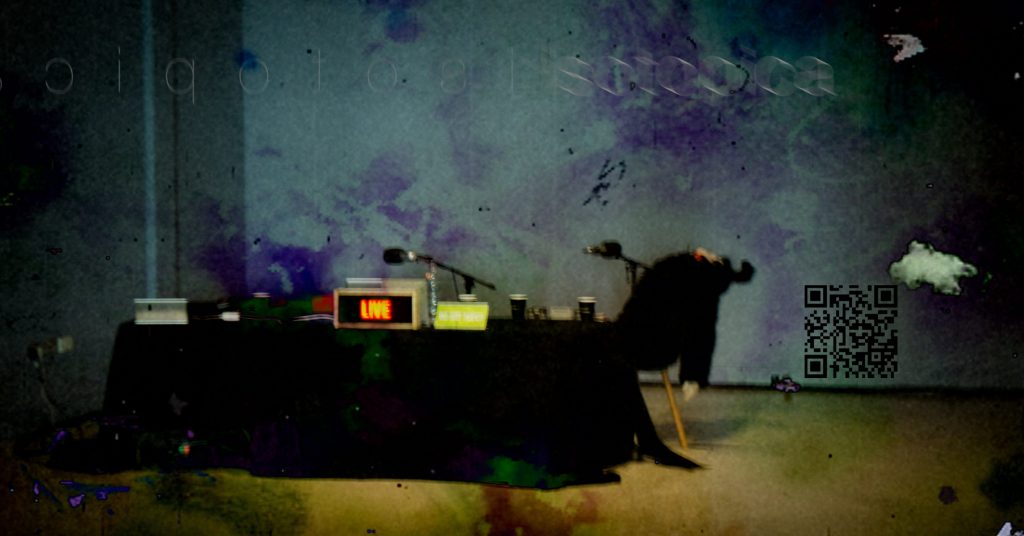
episodes above are
1 the visit to phlight
2 the trip to leeds
CHANCE: A THROW OF THE DICE
Leeds MA Art and Design have worked with the artist and broadcaster Simon Tyszko. His practice is an example of how spoken transmission (radio broadcast), and object making (specifically the installation of objects) also adjust our experience to the living-space of art, co-extensive in public and private realms; unseen, or unheard; and how we compose our experience through chance encounters to revisit an event.
The panel will ask how chance is to be anticipated, put into play, and it might define an encounter with an object’s undecideable and transitory character. A Throw of the Dice Un coup de dés jamais n’abolira le hazard – (A throw of the dice will never abolish chance) Stephane Mallarmé The concept A throw of the Dice derives from a project that has looked at how Stephane Mallarmé composed the poem Un coup de dés over a hundred years ago in 1897 which anticipated, by the ‘logic’ of chance, a kernel of mathematical truth. Art is a performative signifier that placed onus on the spectator and reader as creator and interpreter of a work. What is chance, but an event that deters all predictable outcomes? Where does the contemporary artist, designer or curator locate chance as part of a practice?
The relation of chance to visibility/invisibility is one that is raised through the public space of performance and dialogue. Since Mallarmé’s work resounded in how it ‘sounded’ differently through repeated readings and how words slipped across signification to mean other things at other imagined times, the poem is evocative of figures and yet also constituted as a precise technology of musical arrangements and visual metaphors. We have invited speakers who are artists who are also practitioners in the fields of music, journalism, and criticism to discuss the power of chance operating outside the official cultural signs of the ‘voice’ by multiple readings of the text. This becomes very apparent in rereading the work Un coup de dés. It is on this basis that the MA participants have developed responses to present a constellation of new works under the umbrella of Un coup de dés that interrogate avant garde practice, as a constant need for repetition in the ‘throwing the dice’. It is precisely why, we ask, the avant-garde cannot take place, or throw the dice, once and for all times, ‘but must be permanently repeated to resist permanent historical change and chronic lack of time.’ Boris Groys ‘At the beginning of his Lectures on Aesthetics, Hegel asserted that in his time, art was already a thing of the past. Hegel believed that, in the time of modernity, art could no longer manifest anything true about the world as it is. But avant-garde art has shown that art still has something to say about the modern world: it can demonstrate its transitory character, its lack of time; and to transcend this lack of time through a weak minimal gesture requires very little time—or even no time at all. Boris Groys, The Weak Universalism e-flux journal 2010
[field name=xframe]
Talk
A panel discussion with Peter Fillingham, artist, curator and academic, Nooshin Farhid, artist and curator currently lecturing at Central St Martins, University of the Arts, London; Colm Lally, Artist and Director of Event Gallery; Giorgio Sadotti, artist; Peter Suchin, artist and critic for Art Monthly, Frieze; Simon Tyszko, artist and broadcaster for Resonance Radio FM; Dr Cecilia Wee, Lecturer in Communications at Royal College of Art, musicologist, and broadcaster for Resonance Radio FM; and Elizabeth Wright, artist and Pathway Leader in 3D at Central St Martins, University of the Arts, London. The MA Art and Design cordially invites the public to take part in the event and to contribute during the day to the discussion with the panel of guest speakers, chaired by Peter Lewis, Course Leader, MA Art and Design.The discussion will consider the operation of chance or ‘open’ textual procedures evidenced in works of art and design, especially from the view of their specularity. This specular condition of an object is described in Mallarme’s poem, in the figure of the disappearance of a ship, wrecked at sea. An object which is specular already declares certain qualities of absence: by transparency, reflection, an illusory or multi-faceted surface, or as a fleeting appearance. If we think of art as also exhibiting specularity by other practices, in synaesthetic forms such as sound-waves, or assemblages in installations, an experience can be memorialised, recorded or scripted after the moment of disappearance, as the ‘shipwreck’ in the poem. We can find early avant-garde examples from modern art of this fragile relation of memory and chance in the poem, as in works by Marcel Duchamp, Fluxus, and John Cage; in the sound works of the ‘spoken’ in contemporary composition and performance).

